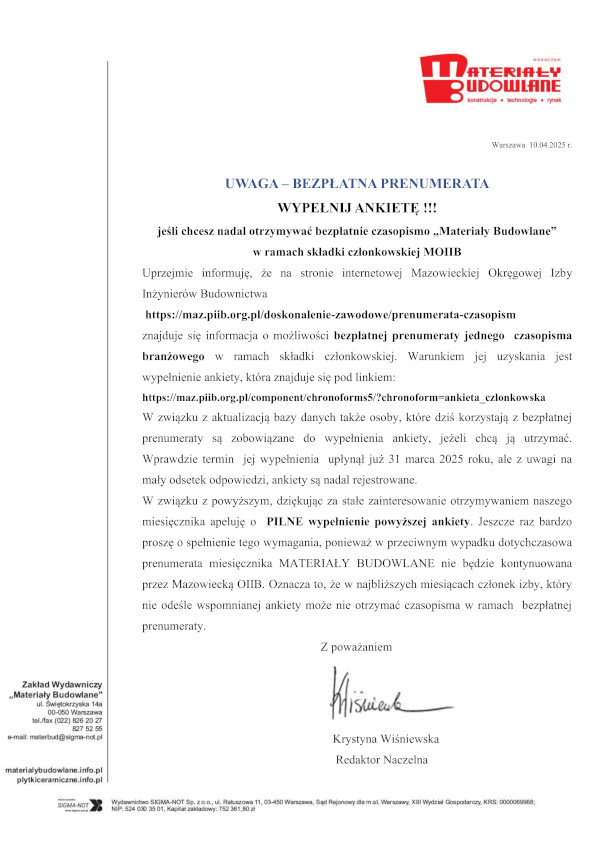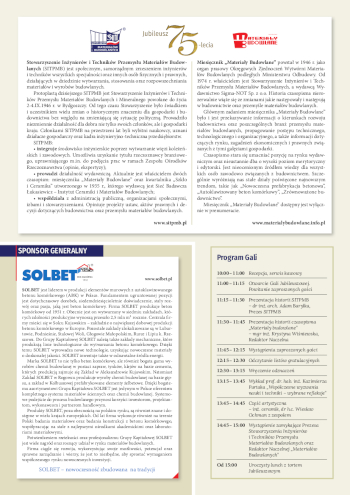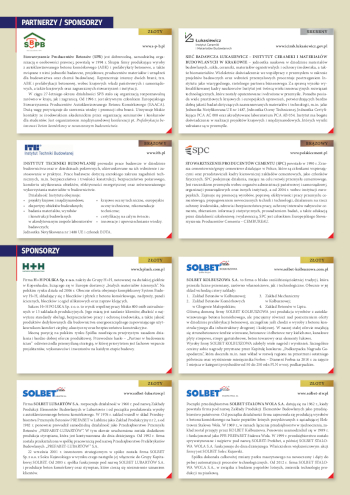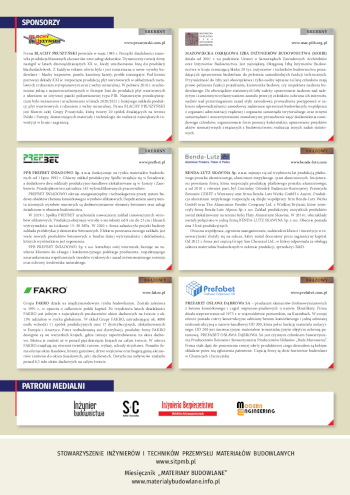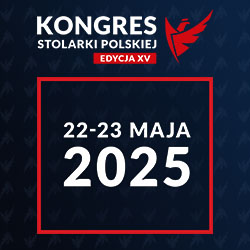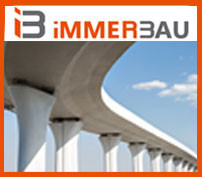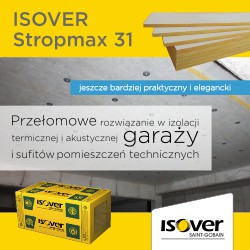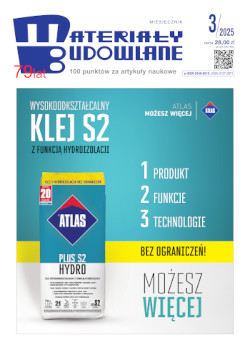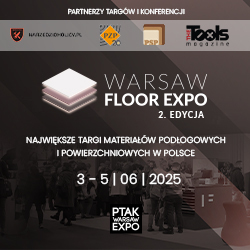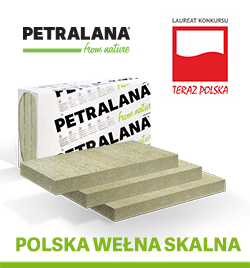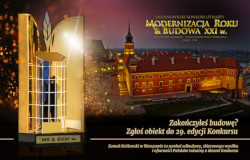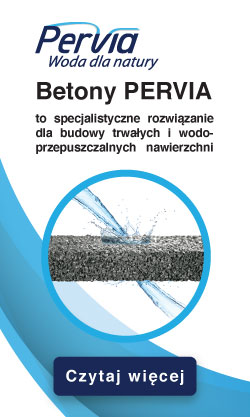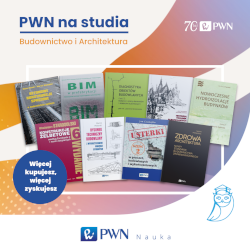prof. dr hab. inż. Marian Abramowicz
Szkoła Główna Służby Pożarniczej, Wydział Inżynierii Bezpieczeństwa Pożarowego
mgr inż. Paweł Chudzik; dr hab. inż. Robert Kowalski, prof. PW
Politechnika Warszawska, Wydział Inżynierii Lądowej
Podczas zaawansowanych analiz konstrukcji żelbetowych narażonych na warunki pożarowe istotną rolę odgrywa wiarygodne określenie reakcji poszczególnych fragmentów konstrukcji (przekrojów) na działanie wysokiej temperatury. W praktyce do przeprowadzenia uproszczonych obliczeń statycznych wykorzystywana jest temperatura średnia przekroju elementu oraz gradient temperatury. W artykule określono zastępcze wartości tych parametrów oraz przeanalizowano wpływ nieliniowego rozkładu temperatury na odkształcenia elementów żelbetowych na przykładzie płyt żelbetowych poddanych jednostronnemu działaniu pożaru standardowego.
Słowa kluczowe: konstrukcja, żelbet, pożar, wysoka temperatura, odkształcenie.
* * *
Reaction of reinforced concrete cross-sections loaded by non-linear temperature distribution in fire conditions
Important issue in advanced analysis of reinforced concrete structures exposed to fire conditions is to determine the response of structural elements (cross-sections) to the effect of high temperature. In practice, to carry out a simplified static calculation the average value and the temperature gradient is used. Substitute values of these parameters are given in this paper. Moreover, paper presents analysis of non-linear temperature distribution effect on strains in concrete structural elements on example of reinforced concrete slabs exposed to one-sided standard fire.
Keywords: structure, reinforced concrete, fire, high temperature, strain.
Przeczytaj cały artykuł (pdf) >>
Materiały Budowlane 10/2014, strona 93-96 (spis treści >>)
dr hab. inż. Mariusz Maślak, prof. PK
Politechnika Krakowska, Wydział Inżynierii Lądowej
W artykule podano zasady szacowania wartości charakterystycznej losowej gęstości obciążenia ogniowego oparte na podejściu probabilistycznym, alternatywnym względem tradycyjnego ujęcia deterministycznego. Założono, że poszukiwana wartość jest górnym kwantylem rozkładu prawdopodobieństwa Gumbela, ustalanym przy odpowiednim poziomie prawdopodobieństwa przewyższenia. Porównano przy tymróżne sposoby gromadzenia danych statystycznych i wykazano znaczący wpływ wyboru zastosowanej metody na uzyskany przez oceniającego wynik ilościowy. Omawiany model formalny odniesiono do dwóch wybranych, stosowanych w praktyce i jakościowo różnych algorytmów postępowania. Pierwszy z nich bazuje na rekomendacjach zawartych w eurokodzie PN-EN 1991-1-2, drugi natomiast na przepisach normy NFPA 557.
Słowa kluczowe: obciążenie ogniowe, wartość charakterystyczna, strefa pożarowa, kwantyl, rozkład Gumbela.
* * *
Probabilistic interpretation of the characteristic value specified for random fire load density in building compartment
In the presented paper the principles of the characteristic value evaluation for random fire load density are discussed in detail, based on a probabilistic approach, the alternative with respect to the traditional deterministic methodology. It is assumed that the searched value is specified as the upper quantile of the Gumbel probability distribution to be set at an appropriate level of the up-crossing probability. The various ways of statistical data collecting are explained and compared to demonstrate a significant impact of the choice of the method used by the expert on the obtained quantitative results. The considered formal model is referred to the two selected and qualitatively different design algorithms which are used in practice. The first one is based on the recommendations contained in the Eurocode PN-EN 1991-1-2, whereas the second on the rules of the standard NFPA 557.
Keywords: fire load, characteristic value, building compartment, quantile, Gumbel probability distribution.
Przeczytaj cały artykuł >>
Materiały Budowlane 10/2014, strona 90-92 (spis treści >>)
Neil Gibbins, QFSM FIFireE DCFO (Retd) The Institution of Fire Engineers, Wielka Brytania
This paper, will describe the evolution of the approach to achieving fire safety in occupied buildings in the UK, highlighting significant changes. The emphasis on prevention has increased, performance standards have replaced prescription, and the regulatory approach has been amended to focus on testing for compliance by the employer, along with other significant changes to the arrangements for fire and rescue services, as part of an integrated risk management framework.
Keywords: fire safety, prevention.
Przeczytaj cały artykuł >>
Przeczytaj cały artykuł (dokończenie) >>
Materiały Budowlane 10/2014, strona 88-89 (spis treści >>)
Professor Venkatesh Kumar R. Kodur; Ph.D. Candidate Anuj Man Shakya
Department of Civil and Environmental Engineering, Michigan State University, USA
Current methods of evaluating fire resistance of concrete structures are mainly prescriptive in nature and developed utilizing data from standard fire tests. These methods may not yield realistic fire resistance, especially for new types of concrete, and geometric configurations subjected to realistic fire loading and restraint scenarios. Many of the drawbacks in current prescriptive approaches can be overcome through rational approaches for evaluating fire resistance. For undertaking such rational approaches, a nonlinear finite element based numerical model and input parameters namely, high temperature material constitutive models, realistic fire, load and support conditions data are required. In this paper, the applicability of rational approach for evaluating fire resistance is illustrated through a case study on typical prestressed concrete hollowcore slabs. Results from the study clearly show that rational approaches for fire resistance evaluation yields higher fire resistance than that obtained through prescriptive based approaches.
Keywords: concrete structures, fire resistance.
Przeczytaj cały artykuł >>
Materiały Budowlane 10/2014, strona 82-87 (spis treści >>)
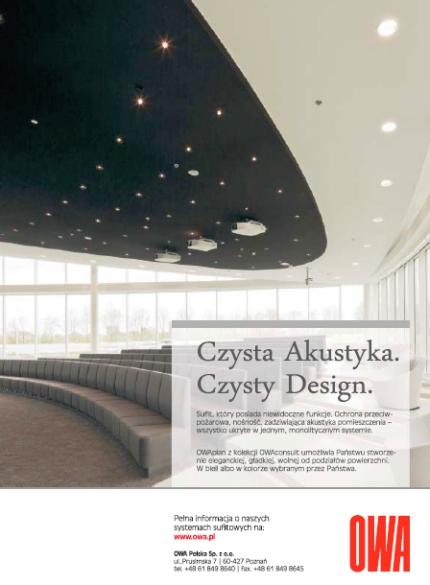
Otwórz powiększenie >>
Materiały Budowlane 10/2014, strona 81 (spis treści >>)
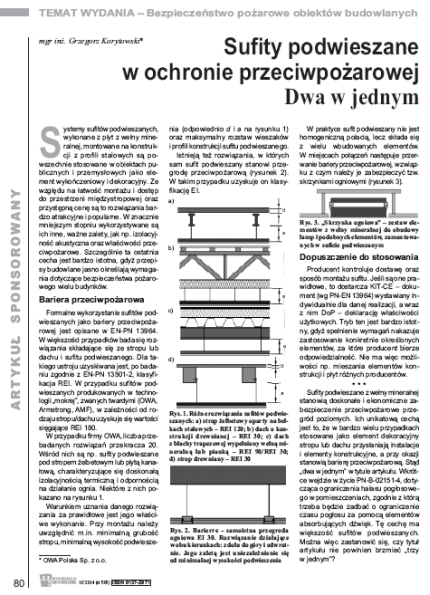
Otwórz powiększenie >>
Materiały Budowlane 10/2014, strona 80 (spis treści >>)

Otwórz powiększenie >>
Materiały Budowlane 10/2014, strona 78-79 (spis treści >>)

Otwórz powiększenie >>
Materiały Budowlane 10/2014, strona 77 (spis treści >>)


